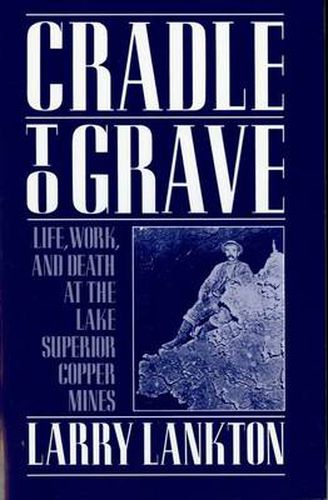Readings Newsletter
Become a Readings Member to make your shopping experience even easier.
Sign in or sign up for free!
You’re not far away from qualifying for FREE standard shipping within Australia
You’ve qualified for FREE standard shipping within Australia
The cart is loading…






Concentrating on technology, economics, labor, and social history, Cradle to Grave documents the full life cycle of one of America’s great mineral ranges from the 1840s to the 1960s. Lankton examines the workers’ world underground, but is equally concerned with the mining communities on the surface. For the first fifty years of development, these mining communities remained remarkably harmonious, even while new, large companies obliterated traditional forms of organization and work within the industry. By 1890, however, the Lake Superior copper industry of upper Michigan started facing many challenges, including strong economic competition and a declining profit margin; growing worker dissatisfaction with both living and working conditions; and erosion of the companies’ hegemony in a district they once controlled. Lankton traces technological changes within the mines and provides a thorough investigation of mine accidents and safety. He then focuses on social and labor history, dealing especially with the issue of how company paternalism exerted social control over the work force. A social history of technology, Cradle to Grave will appeal to labor, social and business historians.
$9.00 standard shipping within Australia
FREE standard shipping within Australia for orders over $100.00
Express & International shipping calculated at checkout
Concentrating on technology, economics, labor, and social history, Cradle to Grave documents the full life cycle of one of America’s great mineral ranges from the 1840s to the 1960s. Lankton examines the workers’ world underground, but is equally concerned with the mining communities on the surface. For the first fifty years of development, these mining communities remained remarkably harmonious, even while new, large companies obliterated traditional forms of organization and work within the industry. By 1890, however, the Lake Superior copper industry of upper Michigan started facing many challenges, including strong economic competition and a declining profit margin; growing worker dissatisfaction with both living and working conditions; and erosion of the companies’ hegemony in a district they once controlled. Lankton traces technological changes within the mines and provides a thorough investigation of mine accidents and safety. He then focuses on social and labor history, dealing especially with the issue of how company paternalism exerted social control over the work force. A social history of technology, Cradle to Grave will appeal to labor, social and business historians.